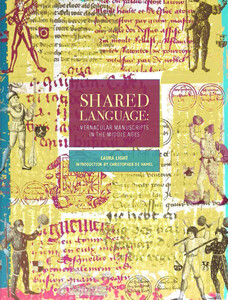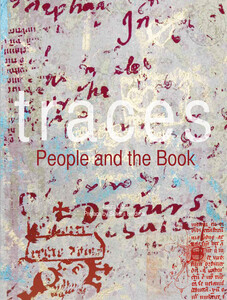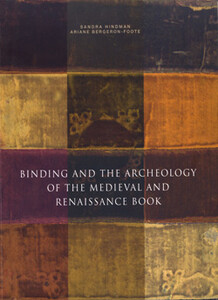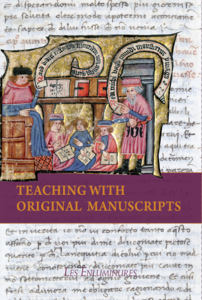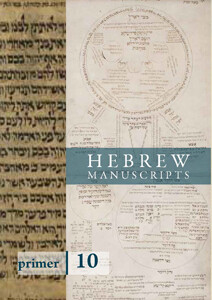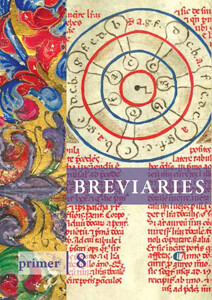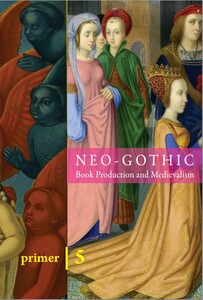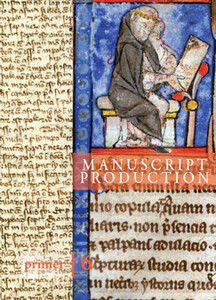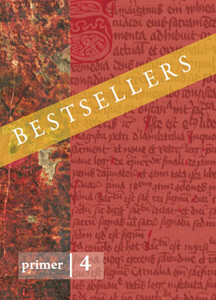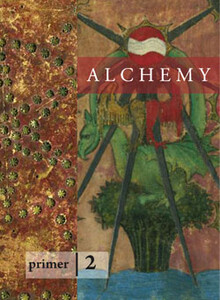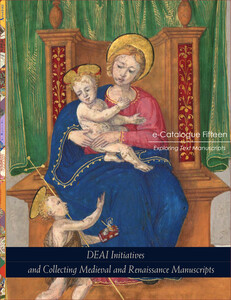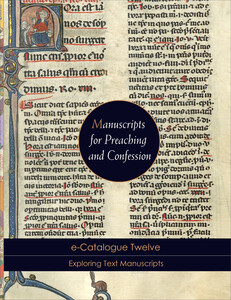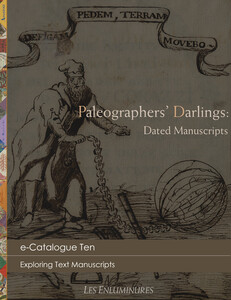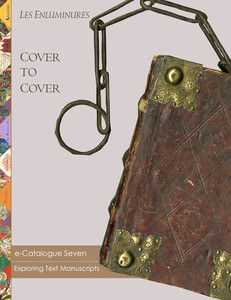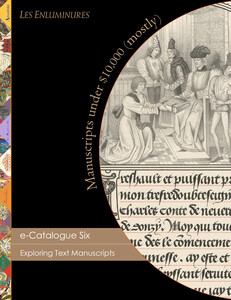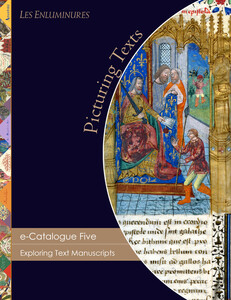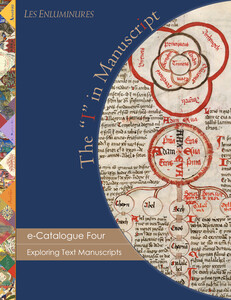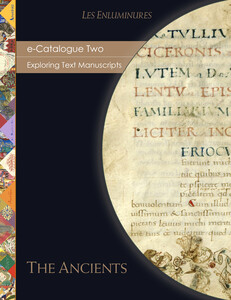SATELLITE 1 - The Woven Prayer Book: Cocoon to Codex
Text by Matthew J. Westerby, 68 pp., fully illustrated, in English
The Satellite Series enables us to explore topics at the edges of our core inventory, looking ath the big picture and connections across media. It is fitting that the first "satellite" is focused on neo-Gothic books woven with silk. Matthew J. Westerby excellent essay presents new findings on five books programmed with punch cards and produced with Jacquard looms in Lyon for submission to the 1889 World's Fair.
SHARED LANGUAGE: VERNACULAR MANUSCRIPTS IN THE MIDDLE AGES
Text by Laura Light with an introduction Christopher de Hamel, and essays by Dennis Dutschke, Stephen Mossman, Emily Runde, John Van Engen, and Mary Beth Winn, fully illustrated, in English
The thirty-six manuscripts included in this catalogue provide viewers unique access to the authentic, spontaneous vision of people in medieval France, Italy, Germany, the Low Countries, and Britain.
TRACES: PEOPLE AND THE BOOK
Text by Laura Light with a preface by Sandra Hindman, fully illustrated, in English
This catalogue focuses on books as material artifacts made and used by people: the people in the book, the people who made them, and (even more) the people who used them, read them and owned them. TEXT MANUSCRIPTS vol. 6
WOMEN AND THE BOOK IN THE MIDDLE AGES AND THE RENAISSANCE
Text by Laura Light with an introduction by Anne Winston-Allen, 127 pp., fully illustrated, in English
This catalogue showcases thirty-six manuscripts that demonstrate the important role that women played as authors, artists, scribes, patrons, and book-owners throughout the Middle Ages and the Renaissance. TEXT MANUSCRIPTS vol. 5
Download
SACRED SONG - CHANTING THE BIBLE IN THE MIDDLE AGES AND RENAISSANCE
Text by Laura Light and Susan Boynton, 104 pp., fully illustrated, in English
The fourth in our series of Text Manuscripts catalogues, "Sacred Song: Chanting the Bible in the Middle Ages and Renaissance," brings together thirty-two manuscripts from the fourteenth to the nineteenth centuries that represent different aspects of the chant tradition, as well as other forms of sacred music. TEXT MANUSCRIPTS vol. 4
PATHS TO REFORM “THINGS NEW AND OLD”
Text by Sandra Hindman and Laura Light with an introduction by David Lyle Jeffrey, 116 pp., fully illustrated, in English
This catalogue, third in a series of catalogues on text manuscripts, is called "Paths to Reform." The approximately thirty-five manuscripts presented here highlight the texts that inspired reform movements from the twelfth to the sixteenth century. TEXT MANUSCRIPTS vol. 3
Download
ANTONIO TEMPESTA'S BLOCKS AND WOODCUTS FOR THE MEDICEAN 1591 ARABIC GOSPELS
Text by Richard S. Field, 27 pp., fully illustrated, in English
The essay in this catalogue examines seventy-three blocks designed by Antonio Tempesta for the Evangelium Sanctum Domini nostri Jesu Christis, the first complete Western appearance of the four canonical Gospels written in Arabic.
BEFORE THE KING JAMES BIBLE
Text by Laura Light and Sandra Hindman, 103 pp., fully illustrated, in English
This catalogue explains the pre-history of the King James Bible, “the book that changed the world,” with a complete introduction and short essays on thirty-seven manuscripts (organized in five different categories). TEXT MANUSCRIPTS vol. 2
Download
BINDING AND THE ARCHEOLOGY OF THE MEDIEVAL AND RENAISSANCE BOOK
Text by Sandra Hindman and Ariane Bergeron-Foote, 88 pp., fully illustrated, in English
This catalogue includes an introduction, essays, a glossary, and a complete bibliography on manuscripts with original bindings. TEXT MANUSCRIPTS vol. 1
PRIMER 5: NEOGOTHIC
Text by Sandra Hindman with Laura Light, fully illustrated, in English
This Primer provides short introduction to a complex subject: how artists, scribes, and publishers in France, England, Germany, and the United States used the remote medieval past to articulate aesthetic principles in the book arts at the dawn of the modern era. We cover the period from about 1840 to about 1920. Although there are thirteen examples in this Primer, many include more than one work.
PRIMER 6: MANUSCRIPT PRODUCTION
Text by Richard H. Rouse (University of California) and Laura Light, 36 pp., fully illustrated, in English
“Manuscript Production,” the sixth volume in our series of “Primers,” addresses the most basic questions: how were manuscripts made? who made them? and even (in one case), how long did it take? None of these questions are necessarily easy to answe, but, as is shown here, the first step toward an answer involves careful study of manuscripts as material artifacts.
PRIMER 4: BESTSELLERS
Text by Pascale Bourgain (Ecole des Chartes) and Laura Light, 36 pp., fully illustrated, in English
“Bestsellers,” the fourth volume in our series of “Primers,” assembles a group of manuscripts that survive in many hundreds of copies to explore the idea of the medieval “bestseller.” Medieval “bestsellers” were the texts considered truly important, and thus preferentially copied, during the Middle Ages. The texts in this collection include some that are still read today, alongside others, of equal significance, that are hardly known even to scholars and almost certainly seldom read.
E-CATALOGUE 16: RECORDS OF DAILY LIFE FROM THE MIDDLE AGES AND RENAISSANCE
Text by Sandra Hindman and Laura Light
Legal and administrative records from public and private sources, or documents, might sound a little dry, or a little specialized. If that was your first thought, the items collected here in this short list will surprise you both with their immediacy (they all record things of real importance to everyone mentioned in their text) and, often, with their beauty, seen in their script, handsome notary marks, and even, at times, illumination.
Download
E-CATALOGUE THIRTEEN: ASSOCIATION MANUSCRIPTS
Text by Sandra Hindman and Laura Light
Association copies (books owned or annotated by their author, someone close to the author, or more broadly, by any notable individual) are prized by collectors of printed books. It is not ordinarily a term applied to medieval or Renaissance manuscripts, but we have recently been having fun with the concept, which underlines the fascination we all have with the people associated with every book, be it printed or copied by hand.
Download
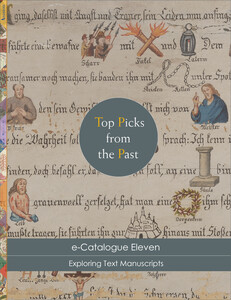
E-CATALOGUE ELEVEN: TOP PICKS FROM THE PAST
Text by Sandra Hindman and Laura Light
In this catalogue, we return to some of our favorite manuscripts from the extensive inventory on www.textmanuscripts.com to demonstrate how diverse, and often surprising, that inventory is. There are now c.1072 manuscripts on our text manuscripts site, which includes both current inventory, and items that are now sold (sold inventory remains on the site for reference and study). Each of our 12 favorites teaches something new. Here are books that were used for more than reading (amulets, talismans, receptacles for pilgrims’ badges); books that are neither rolls nor codices (a folding genealogical ‘roll’); books that contain precious evidence of how they were made (a university pecia manuscript). Other manuscripts bring to life the diversity of medieval culture: a Hebrew manuscript of a work by a great Christian theologian and saint; medieval philosophy copied by a German scribe in Crete, in Latin but with a short coda in a very rare Baltic language.
Download
E-CATALOGUE SIX: MANUSCRIPTS UNDER $10,000 (MOSTLY)
Text by Sandra Hindman and Laura Light
Price matters, and this list recognizes the fact, presenting six books and manuscripts defined simply by their price. All are less than $20,000, and three are less than $10,000. An arbitrary criterion? Perhaps, but the resulting list is full of interest. Spanning the centuries from the 15th through the 20th, these manuscripts and books touch on numerous topics in book history: the technologies of book making, authorial autographs, facsimiles, presentation copies, and more.
Sandra Hindman presents E-Catalogue Six - Video
Download
E-CATALOGUE FIVE: PICTURING TEXTS
Text by Sandra Hindman and Laura Light
Text manuscripts are not only interesting for their texts–indeed, some of them include pictures. Pictures we can all enjoy. We marvel at the glowing colors and the skill of the artists who made them. But the function of painted decoration in medieval and Renaissance manuscripts was never only aesthetic. Here we present ten manuscripts and books with figurative decoration. Each example invites the question of why (to help readers find their place, provide images for private devotion, or entice potential patrons, to name a few possibilities) and how (painted by hand, printed and then hand-illuminated, and even woven). The pictures in these examples are as unique and intrinsically interesting as their texts.
Download
E-CATALOGUE FOUR: THE "I" IN MANUSCRIPT
Text by Sandra Hindman and Laura Light
Manuscripts are, by definition, made by hand, and one of the thrills of studying them is connecting with the many people who made them, from the parchment or paper maker, to the scribe, the illuminator, and binder, and the many people who owned and read them down through the centuries. At times, though, these people can seem abstract and are often unnamed. It is thus exciting when the personal comes into focus and we meet the “I” in a manuscript, as it does in the case of each of the ten manuscripts in this varied list. Here we have scribes and original owners known by name, owner-produced books (or as we have called them, “selfie-books”), and biographies that by definition focus on the personal. For the collector and in the classroom, these manuscripts bring the Middle Ages and Renaissance alive.
Download

E-CATALOGUE THREE: EXCUSE MY FRENCH
Text by Sandra Hindman and Laura Light
“If we want to eavesdrop on the actual words of the medieval courts, or the banter of trade, or the inmost thoughts of private piety, it will not be in Latin but in medieval French, English, German, Dutch, or Italian,” so says the inimitable Christopher de Hamel. In this list, we present ten manuscripts in French. Each broadens our picture of medieval and Renaissance society. Canon Law is the law of the church, and Latin was undoubtedly the language of clerics. A thirteenth-century Canon Law manuscript in French reminds us that viewing the civilization of the Middle Ages exclusively through the lens of Latin is much too narrow. Included are histories, feudal records, and texts exploring ethical and religious behavior, some originally composed in French, others translated from Latin. For the classroom and the collector, these manuscripts bring to life the stories of men and women in everyday life in the past.
Download
E-CATALOGUE TWO: THE ANCIENTS
Text by Sandra Hindman and Laura Light
This new series of e-Catalogues focuses on select themes of text manuscripts available in our inventory on www.textmanuscripts.com.
Sallust, Plutarch, Cicero, Juvenal, Boethius–are these authors we still read? that we should still read? Certainly, they have shaped our society. As the historian Mary Beard says, “many of our most fundamental assumptions about power, citizenship, responsibility, political violence, empire, luxury, beauty, and even humour, have been formed, and tested, in dialogue with the Romans and their writing.”
Download
E-CATALOGUE ONE: WOMEN AND THE BOOK
Text by Sandra Hindman and Laura Light
This new series of e-Catalogues focuses on select themes of text manuscripts available in our inventory on www.textmanuscripts.com.
Manuscripts made and/or owned by women offer one of the best and most vivid resources for telling the stories of these women, secular and religious, young and old, high-born and common. Seven of the manuscripts in our new list were owned by, and often made by, nuns; the lives of secular women are revealed in three special manuscripts. For the classroom and the collector, these manuscripts bring to life the roles women played in society.
Download



